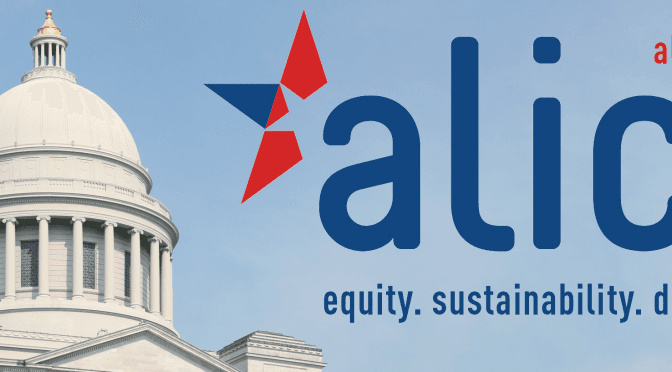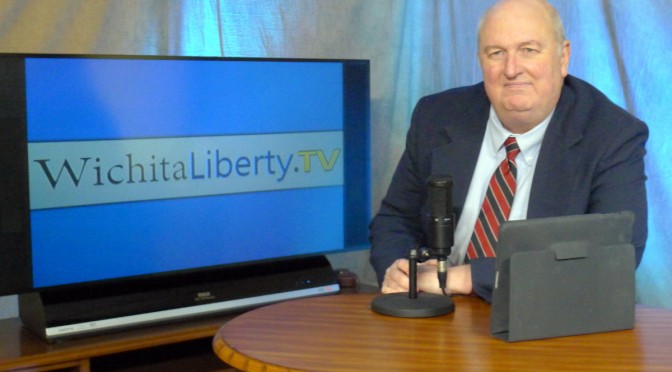The Wichita City Council regularly awards economic development incentives. Are these incentives helpful, or not?
 In November the Wichita City Council granted Industrial Revenue Bonds to Spirit Aerosystems.
In November the Wichita City Council granted Industrial Revenue Bonds to Spirit Aerosystems.
The amount of the proposed bond issue was $49,000,000. The purpose of these IRBs is to allow the recipient to escape the payment of property taxes, and often sales taxes too. This action by the council may exempt up to $49,000,000 of property from taxation, both ad valorem (property) and sales. A 100 percent exemption is proposed for five years, plus a second five years if conditions are met.
The city uses benefit-cost ratios to justify its expenditures on economic development incentives. The reasoning is that by spending cash (such as on a forgivable loan) or forgiving taxes (as in the current case), the city (and county, state, and school district) gain even more than they give up. Generally, Wichita requires a benefit-cost ratio of 1.3 to 1 or better, although there are many exceptions and loopholes that are used if a potential deal doesn’t meet this criteria.
The council’s agenda packet gives benefit-cost ratios for the various taxing authorities, but it doesn’t list the dollar amounts of the tax abatements. Usually these dollar amounts are supplied.
One of the taxing jurisdictions affected by this proposed action is USD 260, the Derby school district, as the property is within its boundaries. In this case, the benefit-cost ratio given for the Derby school district is 1.00 to 1. Since the City of Wichita requires 1.3 to 1 or better for itself, by what right does the city impose a burden on a school district that it would not accept for itself? (The tax rate for Derby schools is 59.3 mills; while for the City of Wichita the rate is 32.5 mills.)
It’s important to note that the benefits claimed from the IRBs are in the form of increased taxes paid.
The harm of this incentive is that the taxes not paid by Spirit Aerosystems are shifted to other taxpayers. The money these taxpayers would have spent or invested is instead spent on taxes. Instead of people and businesses firms deciding how to spend or invest, Wichita City Hall does this for them. This brings into play a whole host of problems. These include the deficit of knowledge needed to make good investment decisions, decisions being made for political rather than economic reasons, and the corrosive influence of cronyism.
There is something the city could to do alleviate this problem. Would the city consider reducing its spending by the amount of tax being abated? In this case, the cost of these tax abatements will not be born by others. So far, the city has not considered this possibility.
Wichita’s management of incentives
Recent reporting told us what some have suspected: The city doesn’t manage its economic development efforts. One might have thought that the city was keeping records on the number of jobs created on at least an annual basis for management purposes, and would have these figures ready for immediate review. But apparently that isn’t the case.
We need to recognize that because the city does not have at its immediate disposal the statistics about job creation, it is evident that the city is not managing this effort. Or, maybe it just doesn’t care. This is a management problem at the highest level. Shouldn’t we develop our management skills of tax abatements and other economic development incentives before we grant new?
Wichita’s results in economic development

Despite the complaints of many that Wichita doesn’t have a rich treasure chest of incentives, the city has been granting tax abatements for years. What is the result? Not very good. Wichita is in last place in job creation (and other measures of economic growth) among our Visioneering peer cities. See here Wichita and Visioneering peers job growth.
If we believe that incentives have a place, then we have to ask why Wichita has done so poorly.
Particularly relevant to this applicant today: Boeing, its predecessor, received many millions in incentives. After the announcement of Boeing leaving in 2012, a new report contained this: “‘They weren’t totally honest with us,’ said [Wichita Mayor Carl] Brewer of Boeing, which has benefited from about $4 billion of municipal bonds and hundreds of millions of dollars in tax relief. ‘We thought the relationship was a lot stronger.’” Has anything changed?
A few remarks and questions about incentives
1. The benefits that government claims are not really benefits. Instead, they’re in the form of higher tax revenue. This is very different from the profits companies earn in voluntary market transactions.
2. Government claims that in order to get these “benefits,” the incentives must be paid. But often the new economic activity (expansion, etc.) would have happened anyway without the incentives.
3. Why is it that most companies are able to grow without incentives, but only a few companies require incentives? What is special about these companies?
4. If the relatively small investment the city makes in incentives is solely responsible for such wonderful outcomes in terms of jobs, why doesn’t the city do this more often? If the city has such power to create economic growth, why is anyone unemployed?
A diversified economy

The mayor and council members have said that we need to diversify our economy. The award of incentives to Spirit Aerosystems reduces diversification. It gives special benefits worth millions to the largest company in our most concentrated industry. The costs of these incentives are born by other companies, especially entrepreneurs and start up companies. It’s these entrepreneurs and young companies that must be the source of diversity and dynamism in our economy.
(If we really believe that these incentives have no cost, why don’t we offer them more often? Think of how many companies go out of business each month. Many of them could be saved with just a little infusion of cash. Why doesn’t the city rescue these firms with incentives?)
Do incentives work?
The uncontroverted peer-reviewed research tells us that targeted economic development incentives don’t work, if we consider the entire economy. See: Research on economic development incentives. Some of the conclusions of the studies listed there include:
“No evidence of incentive impact on manufacturing value-added or unemployment”
“Small reduction in employment by businesses which received Ohio’s tax incentives”
“No evidence of large firm impacts on local economy”
“No permanent employment increase across a quasi-experimental panel of all Cabela’s stores”
“Employment impact of large firms is less than gross job creation (by about 70%)”
These research programs illustrate the fallacy of the seen and the unseen. It is easy to see the jobs being created by economic development incentives. It’s undeniable that jobs are created at firms that receive incentives, at least most of the time. But these jobs are easy to see. It’s easy for news reporters to find the newly-hired and grateful workers, or to show video footage of a new manufacturing plant.
But it’s very difficult to find specific instances of the harm that government intervention produces. It is, generally, dispersed. People who lose their jobs usually don’t know the root cause of why they are now unemployed. Businesses whose sales decline often can’t figure out why.
But evidence tells us this is true: These incentives, along with other forms of government interventionism, do more harm than good.
Can officials manage growth?
Alan Peters and Peter Fisher wrote an academic paper titled The Failures of Economic Development Incentives, published in Journal of the American Planning Association. A few quotes from the study, with emphasis added:
Given the weak effects of incentives on the location choices of businesses at the interstate level, state governments and their local governments in the aggregate probably lose far more revenue, by cutting taxes to firms that would have located in that state anyway than they gain from the few firms induced to change location.
On the three major questions — Do economic development incentives create new jobs? Are those jobs taken by targeted populations in targeted places? Are incentives, at worst, only moderately revenue negative? — traditional economic development incentives do not fare well. It is possible that incentives do induce significant new growth, that the beneficiaries of that growth are mainly those who have greatest difficulty in the labor market, and that both states and local governments benefit fiscally from that growth. But after decades of policy experimentation and literally hundreds of scholarly studies, none of these claims is clearly substantiated. Indeed, as we have argued in this article, there is a good chance that all of these claims are false.
In 2008 Kansas Legislative Division of Post Audit investigated spending on economic development. It found about the same as did Peters and Fisher.
Going forward
Politicians and bureaucrats promote programs like this tax abatement as targeted investment in our economic future. They believe that they have the ability to select which companies are worthy of public investment, and which are not. It’s a form of centralized planning by the state that shapes the future direction of the Wichita and Kansas economy.
These targeted economic development efforts fail for several reasons. First is the knowledge problem, in that government simply does not know which companies are worthy of public investment. This lack of knowledge, however, does not stop governments from creating policies and awarding incentives. This “active investor” approach to economic development is what has led to companies receiving grants or escaping hundreds of millions in taxes — taxes that others have to pay. That has a harmful effect on other business, both existing and those that wish to form.

Professor Art Hall of the Center for Applied Economics at the Kansas University School of Business is critical of this approach to economic development. In his paper Embracing Dynamism: The Next Phase in Kansas Economic Development Policy, Hall quotes Alan Peters and Peter Fisher: “The most fundamental problem is that many public officials appear to believe that they can influence the course of their state and local economies through incentives and subsidies to a degree far beyond anything supported by even the most optimistic evidence. We need to begin by lowering expectations about their ability to micro-manage economic growth and making the case for a more sensible view of the role of government — providing foundations for growth through sound fiscal practices, quality public infrastructure, and good education systems — and then letting the economy take care of itself.”
In the same paper, Hall writes this regarding “benchmarking” — the bidding wars for large employers: “Kansas can break out of the benchmarking race by developing a strategy built on embracing dynamism. Such a strategy, far from losing opportunity, can distinguish itself by building unique capabilities that create a different mix of value that can enhance the probability of long-term economic success through enhanced opportunity. Embracing dynamism can change how Kansas plays the game.”
In making his argument, Hall cites research on the futility of chasing large employers as an economic development strategy: “Large-employer businesses have no measurable net economic effect on local economies when properly measured. To quote from the most comprehensive study: ‘The primary finding is that the location of a large firm has no measurable net economic effect on local economies when the entire dynamic of location effects is taken into account. Thus, the siting of large firms that are the target of aggressive recruitment efforts fails to create positive private sector gains and likely does not generate significant public revenue gains either.’”
There is also substantial research that is it young firms — distinguished from small business in general — that are the engine of economic growth for the future. We can’t detect which of the young firms will blossom into major success — or even small-scale successes. The only way to nurture them is through economic policies that all companies can benefit from. Reducing tax rates is an example of such a policy. Abating taxes for specific companies through programs like IRBs is an example of precisely the wrong policy.
We need to move away from economic development based on this active investor approach. We need to advocate for policies — at Wichita City Hall, at the Sedgwick County Commission, and at the Kansas Statehouse — that lead to sustainable economic development. We need political leaders who have the wisdom to realize this, and the courage to act appropriately. Which is to say, to not act in most circumstances.
 Progressives criticize “bill mills,” but the movement has its own. Criticism of policies based simply on their sources is a weak form of argument. But this is the substance of criticism leveled against ALEC, or American Legislative Exchange Council.
Progressives criticize “bill mills,” but the movement has its own. Criticism of policies based simply on their sources is a weak form of argument. But this is the substance of criticism leveled against ALEC, or American Legislative Exchange Council.




















